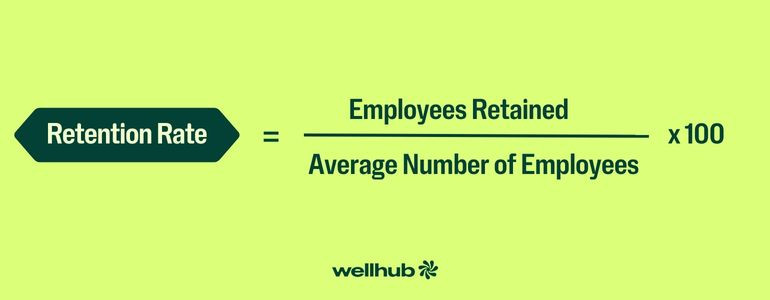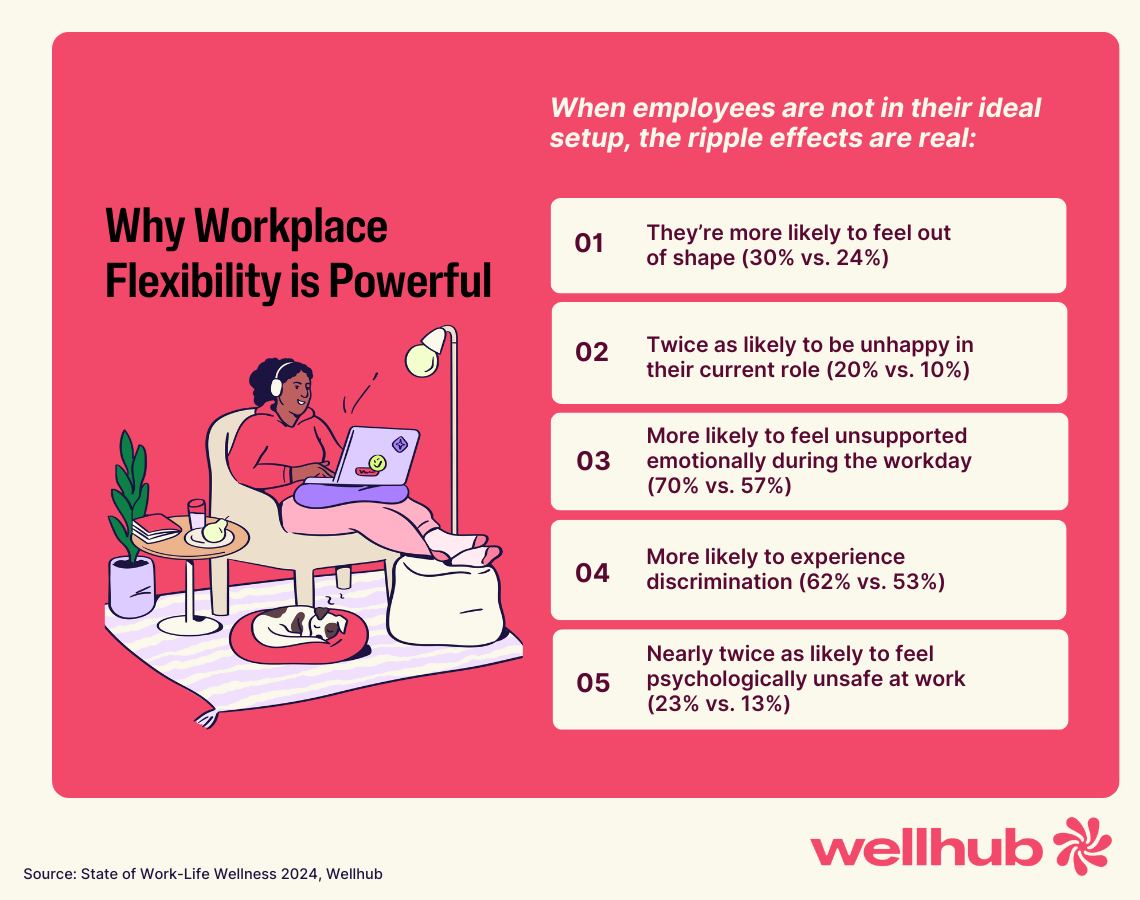Employee Retention Guide
Last Updated Jul 24, 2025

High turnover is a headache througha nd through: It’s a slow leak draining talent, time, and revenue.
When great employees walk out the door, they don’t just take their skills. They take knowledge, momentum, and morale with them. The remaining team scrambles to pick up the slack, stress piles up, and the risk of burnout skyrockets. Replacing even a single team member can cost thousands. Repeat that across multiple roles, and the financial impact becomes impossible to ignore.
But it doesn’t have to be this way. With the right retention strategies, HR leaders can keep top talent engaged, motivated, and thriving for the long haul. Discover how to build a workplace where people actually want to stay—and grow.
“Set things up right in the beginning,” Charlane Brady, MSW, Management and Leadership, a 20-year human resources consultant to startups, says. “Retention really comes down to three things: communication, transparency and agility.”
What is Employee Retention?
Employee retention is a comprehensive strategy that motivates employees to do their jobs well while continuing to grow so that they elect to remain employed and fully productive for the benefit of the organization. For this to occur, employees must be engaged or, as Brady puts it, “rowing the boat in the same direction.” Unfortunately, according to Gallup’s State of the American Workplace report, 51 percent of American workers are not even in the same boat as their leaders and coworkers. Lack of engagement leads to turnover, both voluntary and involuntary.
Why is Employee Retention Important?
Improved Performance
Employee retention is vital to business success. When top performers and company leaders leave, often they take their expertise and knowledge with them. Depending on how long it takes to replace talent, employees can become overwhelmed when forced to assume additional responsibilities, sparking a domino effect of future turnover due to burnout.
Increased Revenue
Employee turnover is expensive, costing from one-half to two times the employee’s annual salary, by conservative estimates. Further, the average cost per new hire, according to job site Zippia, is $4,425 for non-executives and $14,936 for executives. Retaining employees, on the other hand, can increase revenue significantly. The recruiting and hiring processes, onboarding, orientation and acclimation take time, and time is money.
Better Customer Service
Seasoned employees who choose to stay because of job satisfaction usually bring a good attitude, which reflects well on the company. They’re also likely to be capable and confident, traits customers value. On the flip side, new employees might be less adept at problem-solving, more prone to mistakes and take longer to accomplish tasks, leaving customers with a negative perception and damaging the business’s reputation.
Enhanced Company Culture
Culture starts with the way employees speak to each other, the way they work together and how much they trust each other and management. “How you treat people and get the job done builds the company culture,” Brady says. Culture is about building relationships. Without staff continuity, creating healthy work relationships is nearly impossible.
Improved Employee Morale
When employees see their coworkers head for the exit, they start to think maybe they should go too. Work relationships suffer and workers become disengaged. Their productivity declines.
What Causes Employee Turnover?
Poor Management
And the number one reason people quit their bosses is because of lack of communication, according to Brady. She suggests every employee retention program include regular check-ins during which managers ask: Is there anything you need? Is there any way I can help you do your job? Do you like what you’re doing? Is there anything you need to learn? If the company doesn’t have funds for training, get creative, figure out ways to help employees. “Leaders have to have emotional intelligence. The best leaders communicate simply and transparently,” Brady says.
Feeling Undervalued
Showing employees they are appreciated increases engagement, retention, productivity and morale. Appreciation goes beyond salary. It includes benefits—particularly wellness programs—volunteer opportunities, celebrations of birthdays and performance milestones, social media shout outs, recognition programs, awards, gift cards, training opportunities, parties and annual retreats. Talk to employees and find out what matters most to them. Do they want to bring their dogs to the office? Do they want a flexible schedule? Ask them why they want what they want.
Incompatibility
Hire the right people with the right skills and make sure they buy into the business’s core mission. This, again, starts with why. Decision makers need to ask themselves why they’re hiring this person for this job. They need to know where the company is going, company and department objectives and how new hires support those goals. Between 25 to 33 percent of new hires quit within the first six months. Some reasons include new employees feeling neglected, overwhelmed, underappreciated and underqualified.
Poor Onboarding
Onboarding, done well, sets the foundation for employees’ success. It’s much more than filling out tax and payroll forms and handing out a copy of the employee handbook. Initiating onboarding before employees’ first day helps them feel valued and that their comfort and security in the workplace are priorities. Have all technology—computers, printers, email and messaging accounts—set up for new employees before they arrive. Make sure someone greets them on their first day and shows them around. Give new employees the resources they need on day one. Also, let them know what’s expected of them in their earliest days on the job.
“If employees don’t know what to expect in the first 72 hours, they may already be on the way out the door,” Brady says. “When people are first hired, they become anxious with downtime. Performers want to perform. Let them know they’re going to have downtime during the first few days and that it’s okay. Simplify your message to new employees and repeat it often.”
Toxic Work Environments
In early 2022, 16 Fast Company Executive Board panelists identified key signs of a toxic work environment. Aside from turnover—the main indicator of toxicity—the panelists cite a culture of cronyism, structural fear of retribution, gossip, troubling behaviors or body language, reserved team members, lack of trust between colleagues, lack of confidence in leadership, inflexible communication, lack of time to reflect, tension in the office, nonverbal feedback, fear of speaking candidly, and uncertain work responsibilities and boundaries. When it comes to the work environment, one bad apple can spoil the whole bunch. “If people are not doing their jobs or are creating problems for their coworkers, you have to be able to let them go,” Brady says, cautioning against shifting poor employees to a different department within the company or assigning them different tasks. “You don’t transfer problems.”
Ignoring Wellbeing
Employees value their jobs for more than money: Four out of five employees value their wellbeing at work just as much as their salary, and 83% of employees would consider leaving a company that does not focus on employee wellbeing. If you neglect wellness by not offering wellbeing support or mandating long, inflexible hours, employees are quickly going to find the door.
How to Calculate Employee Retention Rate
There are several employee retention metrics you can track to help you gauge the effectiveness of your employee retention strategies. Most companies choose to measure the overall retention rate. Retention rate refers to the number of tenured employees who stay throughout a given period of time. The rate does not factor in new hires.
The simplest way to calculate employee retention rate is to divide the number of retained employees throughout a given time period by the initial amount of employees in that time period. Then, multiply that figure by 100.

Employee Retention Models
Maslow's Hierarchy of Needs
Developed by American psychologist Abraham Maslow, the hierarchy of needs theorizes that five basic categories of needs motivate people:
- Physiological needs include air, water, food, shelter, clothing, reproduction. The motivation to fulfill these needs is the strongest in humans.
- Safety needs include personal security, employment resources, health, property. Once physiological needs are met, people pursue their safety needs.
- Love and community. Family, friendship, sense of connection, intimacy. Only when physiological and safety needs are met can people embrace their need to love and be loved.
- Esteem. Respect, status, recognition, strength, freedom, dignity. After basic sustenance, safety and human connection needs are met, people are able to achieve their desire to be esteemed.
- Self-actualization. Those who have met all of their other needs are able to strive for becoming the best or most they can be.
Employment can help people attain all five levels of needs. Salary and benefits provide the means to attain the first and second levels, coworkers and a healthy work environment satisfy some of the need for community and friendship. Company culture that values its employees and emphasizes recognition programs addresses the fourth level of the pyramid and professional development is part of meeting employees’ self-actualization goals.
In reality, people don’t necessarily progress through Maslow’s hierarchy of needs in a purely linear fashion and most people don’t wait until they’ve achieved every factor on a level before pursuing needs of the next levels. The important thing for employers to focus on is that they are uniquely able to meet all five levels of needs in some way.
Motivation-hygiene Theory
Developed by American psychologist Frederick Herzberg, a pioneer in business management strategies, this theory emphasizes the value of effective managers. His theory places employees’ needs into two categories: motivation factors that create a sense of satisfaction and hygiene factors that determine the basic level of job stability and security. Motivating factors include rewards, recognition, advancement opportunities, access to training/education and benefits. Hygiene factors include a safe environment, being spoken to in a respectful manner, having competent management and being fairly paid. From these two factors, four motivation-hygiene combinations are possible:
- High motivation-High hygiene: Under ideal circumstances, employees are happy. They feel motivated, trust their managers and believe they are fairly compensated. They also look for opportunities to advance in the organization.
- High motivation-Low hygiene:These workers engage in work projects that are meaningful to them, enjoy praise from their managers and have plenty of autonomy. The downside is pay that is not commensurate with education, skill and experience levels and a lack of resources (technology hardware/software) and long hours make the job frustrating.
- High hygiene-Low motivation: These workers feel safe and well-managed. They do their jobs, but rarely go the extra mile. Their sense of loyalty is low and they will leave quickly if offered better pay or benefits elsewhere.
- Low Motivation-Low Hygiene: These workers are the complainers. They’re unhappy with their pay, job duties, benefits, managers and work conditions. Often they stay at a job only because they feel they have no other option.
Applying Herzberg’s two-factor theory involves first understanding what employees are experiencing. One way to do that is by asking them. The foundation of a healthy work environment is open communication and managers who want to retain their employees have to start with being the type of person employees feel comfortable talking to. Anonymous surveys and polls across different levels of employees can also yield valuable information.
Create a culture of communication. Initiate rewards programs. Offer valuable benefits that help employees focus on their own wellness. People who take good care of themselves treat others better and are generally higher functioning. Improving working conditions isn’t all or nothing. Often, little changes can have a huge impact on employer retention strategies.
Human Motivation Theory
American psychologist David McClelland theorized that every person is driven by one of three main motivators: the need for achievement, affiliation or power. These motivators develop outside peoples’ natural talents and tendencies; they develop through learned life experiences.
Achievers like to solve problems and achieve goals. These workers often prefer to work alone. Allowing them to work from home can help companies retain these employees.
Employees with a strong need for affiliation are risk averse and value relationships over recognition. These workers enjoy collaboration and usually avoid competition. Employee retention programs that build community—happy hours, team celebrations/team-building activities and company retreats—can help keep these employees happy.
Those motivated by power want to be in charge. These employees enjoy competition and winning. They want recognition for their work and the status that goes with being a high achiever.
Understanding what motivates employees is an important component of retention strategies.
Job Characteristics Model
Developed in 1976 and updated in 1980, the job characteristics model helps increase employee engagement by making jobs more varied, challenging and motivating. The five components to this model are:
- Skill variety
- Task identity
- Task significant
- Autonomy
- Feedback
How to Improve Employee Retention and Motivation
Employee retention must be woven into the company culture. Retention strategies must account for peoples’ different work and learning styles, their different wants and needs, and their personal values.
Retention starts with recruiting, onboarding and orientation. Hire the right people with the right skills, simplify the onboarding process, eliminate cookie-cutter policies, streamline employee handbooks, simplify policies.
Mentorship Programs
During the onboarding process, pair new employees with mentors. This is especially important for employees working from home. New team members start off on the right foot and learn the job and company culture from an experienced member. The mentor also benefits through gaining a fresh perspective from hearing new ideas and seeing the organization through a newcomer’s eyes. This process helps everyone involved develop strong relationships within an organization. The mentoring program should accomplish three objectives: develop specific competencies, provide performance feedback and design an individualized career development plan.
Employee Compensation
Paying people a competitive salary is essential and employers need to regularly adjust salaries, especially in the current environment where inflation is climbing to historic levels. Bonuses work well when employers are not able to increase salaries across the board. But while paying people what they’re worth is essential, salary is only one component of compensation. Employee benefits, including health care and retirement plans, contribute to employees’ overall sense of security and can help drive retention.
Perks
California-based clothing manufacturer Patagonia encourages employees to take an afternoon break and go surfing. It provides free yoga classes and onsite childcare. Google offers 18 weeks paid maternity leave and six weeks paid paternity leave. Netflix has a “bring your dog to work” policy. Flexible schedules and remote work rank right at the top of what employees in today’s market are seeking.
Wellness Offerings
Stress management, fitness and nutrition programs can pay off big for employers. When employees are strong and healthy, they are more productive and more likely to stick around: In fact, 73% of CEOs say their wellbeing program improves talent retention .
Communication
Communicate clearly and consistently, but not unnecessarily. Sending out multiple organization-wide emails daily overwhelms employees and instead of feeling informed, they feel pestered. Meetings can enhance communication; but they can also waste employees’ time. Communicate openly and honestly and ask three questions before speaking or disseminating information: Is it true? Is it necessary? Is it kind?
Performance Reviews
Do away with perfunctory annual reviews and initiate continuous feedback on performance instead. Frequent one-on-one meetings with managers help employees know what’s expected of them and how they’re measuring up. For employers, this process helps in understanding employees’ goals and communicating how those goals could be achieved.
Feedback from Employees
Communication needs to be two-way. The people doing the tasks might have the best ideas for how to do them. Create an environment where employees feel safe speaking up and regularly solicit their feedback.
Encourage a Growth Mindset
When people feel safe making mistakes, they’ll take more risks and become more creative. In order for them to have this sense of safety, employers must instill in them the belief that they can continue learning throughout their lives.
Harness the Power of Peer-to-Peer Recognition Programs
Peer recognition boosts team morale, enhances engagement, increases productivity, improves customer service and decreases absenteeism. These all ultimately have a dramatic impact on the organization’s bottom line.
Training and Development
Continuous feedback on performance helps employees identify opportunities for professional growth, including learning new skills, developing competencies and attaining certifications. Pay for their education and provide time during work hours for them to attend in-person and virtual conferences, classes and workshops. Offer tuition reimbursement for courses and degrees that will increase employees’ value to the company. Teach them how to be leaders and communicators.
Allow Flexible Work Arrangements
If there is no task-oriented or customer-centric reason for employees to be onsite, let them work from home. Any reduction in travel time and expenses can lower stress while boosting employee retention. When remote work isn’t possible, consider options. Flexible schedule? Compressed work week? Shorter work days? A hybrid arrangement? Use agility to meet employees’ requests and remember they have valid reasons for wanting flexible schedules.

Encourage Work-life Wellness
Even during crunch times, make sure employees know it’s okay for them to take a necessary break, attend their child’s ballet recital or soccer game, take their elderly parents to a doctor’s appointment.
Foster Safety in the Workplace
Make sure all managers and leaders speak to employees with respect and treat people with courtesy and kindness. In her 20 years of hiring, training, retaining and letting employees go, Brady says there is one thing every employee has in common. “People want to feel safe—safe enough to have hard conversations, safe enough to make mistakes.”
Effective Change Management
Even when employers do everything in their power to retain employees, some will leave and not all departures will be voluntary. During times of change, employees need reassurance. Be transparent if the organization is going through a major structural change. Keep employees informed, either in town halls, small meetings or personally, and always allow time for questions and for employees to voice concerns.
Diversity and Inclusion
According to Glassdoor’s 2020 Diversity Hiring Survey, 76 percent of employees and job seekers say a diverse workforce is an important factor when evaluating companies and job offers. Diverse teams boost creativity and innovation and are better decision makers. Further, diversity creates increased opportunities for professional growth, according to a December 17, 2021 Forbes article.
Improve Employee Retention by Supporting Their Wellbeing
Turnover happens when employees feel unsupported, disconnected, or stuck. That leads to burnout, low morale, and rising costs—fast. It also makes it harder to build a culture people want to be part of.
A strong wellbeing program changes that. It helps people feel valued, gives them tools to manage stress, and creates space for connection and growth. And it works—85% of HR leaders say their wellbeing program improves talent retention, according to Wellhub data.
Speak with a Wellhub Wellbeing Specialist to build a workplace where your people stay, grow, and thrive.

Company healthcare costs drop by up to 35% with Wellhub*
See how we can help you reduce your healthcare spending.
[*] Based on proprietary research comparing healthcare costs of active Wellhub users to non-users.
Category
Share

The Wellhub Editorial Team empowers HR leaders to support worker wellbeing. Our original research, trend analyses, and helpful how-tos provide the tools they need to improve workforce wellness in today's fast-shifting professional landscape.
Subscribe
Our weekly newsletter is your source of education and inspiration to help you create a corporate wellness program that actually matters.
Subscribe
Our weekly newsletter is your source of education and inspiration to help you create a corporate wellness program that actually matters.
You May Also Like

Attrition, Turnover & Retention Differences Explained | Wellhub
Clearly understand the attrition, turnover, retention difference to improve workforce planning, reduce costs, and strengthen your people strategy.

Termination Letter Template: 3-Step HR Risk Guide | Wellhub
Protect every separation with a termination letter template, plus a 3-step HR framework that reduces legal risk, supports dignity, and keeps teams stable.

10 Exit Interview Questions to Ask | Wellhub
Discover the top 10 exit interview questions to ask employees. Gain valuable feedback, identify areas for improvement, and enhance your workplace culture.